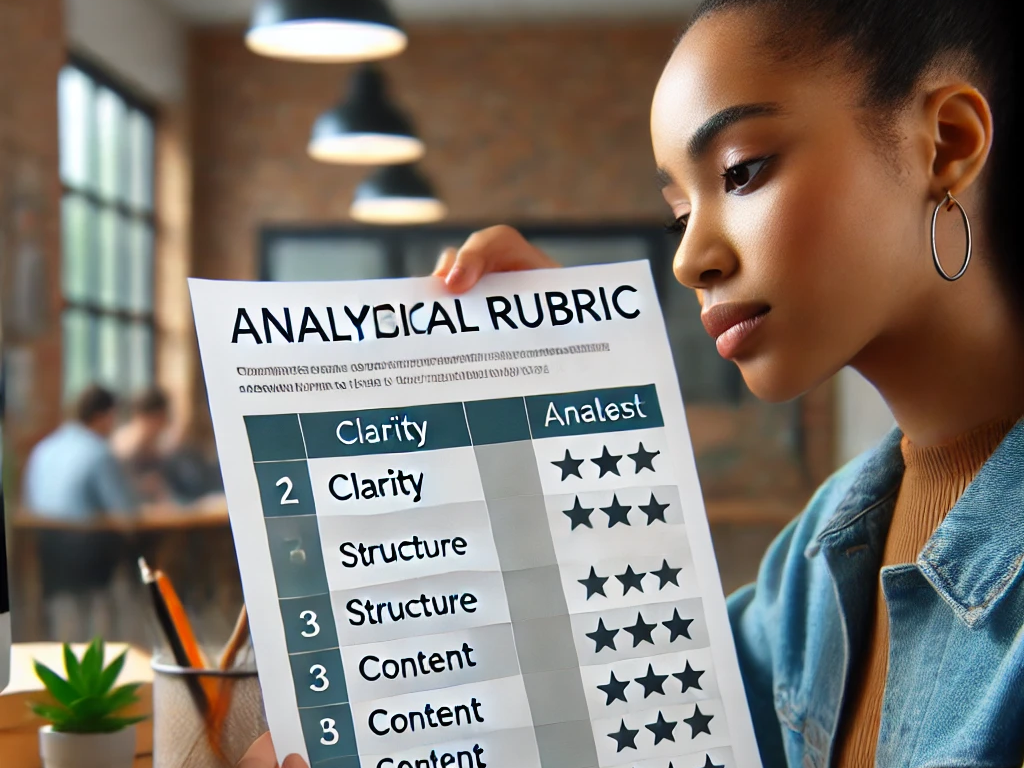Developing an Analytical Rubric

Image prompt: Please create an image of a diverse student checking an analytical rubric
Preparation
This recipe will guide you in creating an analytical rubric that clearly defines criteria for evaluating student performance across multiple dimensions. An analytical rubric allows for detailed feedback on different aspects of student work, helping them understand their strengths and areas for improvement.
Ingredients
Here are some things you might use when using ChatGPT to create discussion prompts:
- Course level
- Course learning objectives (CLOs)
- Specific assignment or assessment the rubric will evaluate (e.g., essay, project, presentation)
- Key criteria or dimensions to assess (e.g., content knowledge, organization, critical thinking)
- Performance levels (e.g., excellent, good, satisfactory, needs improvement)
Optional Ingredients:
- Descriptors or examples for each performance level
- Weighting or point values for each criterion
- Specific feedback comments or suggestions for improvement
- Alignment with institutional or departmental standards
AI Recipe – Try this prompt in ChatGPT:
Please create an analytical rubric for evaluating a [insert assignment type, e.g., research paper, group presentation] in a [insert course level, e.g., undergraduate] course on [insert course topic]. The rubric should include:
- Key criteria for evaluation, such as content accuracy, organization, analysis, and presentation skills.
- Performance levels for each criterion, with descriptors that clearly differentiate between levels (e.g., excellent, good, satisfactory, needs improvement).
- Optional: Weighting or point values assigned to each criterion to reflect their importance.
Cleanup
After generating the analytical rubric, ensure the following:
- The criteria cover all essential aspects of the assignment and align with the course learning objectives.
- The performance levels are clearly defined and provide meaningful distinctions between different levels of achievement.
- The rubric is fair, transparent, and easy for students to understand.
- Consider asking ChatGPT to provide examples or detailed descriptors for each performance level to ensure clarity and consistency in grading.
Using this recipe, you can create an analytical rubric that offers detailed and structured feedback, helping students understand how their work is evaluated and where they can improve.
Example AI Prompt
Create an analytical rubric for evaluating an undergraduate history course research paper. The rubric should include the following criteria: content accuracy, depth of analysis, organization and structure, use of sources, and writing quality. Each criterion should have four performance levels (excellent, good, satisfactory, needs improvement) with detailed descriptors explaining each level. Assign point values to each criterion, with content accuracy and depth of analysis weighted more heavily.

